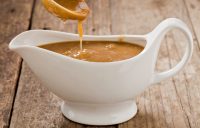
Quick Guide to Metal Cookware
More people are questioning the efficiency and safety of their home cookware. I’ve been asked for advice on the best cookware out on the market today. Please note my degree is not in metallurgy, but I’m willing to share my recent research on the different types of cookware available.
CHEMISTRY 101
Metal cookware can be broken down into two major categories: Reactive and Nonreactive
Reactive metals, such as aluminum, cast iron and copper can react harmfully with acidic foods (citrus juice, tomato, vinegar, wine). Today, most aluminum and copper cookware is lined with a nonreactive metal to make cooking in these metals safer.
- Aluminum is superior in heat conduction. Anodized aluminum is the product of the electrochemical process that alters the metal’s surface to make it virtually non-stick and almost nonreactive.
- Cast iron conducts and retains heat well. Cast iron requires “seasoning” (coating cooking surface with neutral cooking oil and heating) that gives it an organic low-stick surface.
- Copper is superior in heat conduction. Copper is an excellent vessel to cook sauces made with egg and dairy products. It is not non-stick, so it makes for tougher cleaning.
Nonreactive refers to metals, such as stainless steel, that do not cause negative reaction to foods prepared in them.
- Stainless steel has poor heat conduction, but does not react to acids, does not corrode, is long-lasting, non-scratch and easy to clean.
- Bonded stainless steel is a remedy for poor heat conduction. A superior heat conductor, aluminum or copper, is placed between two pieces of stainless steel, providing excellent heat conduction, along with all the other benefits of stainless steel.
A word or two about Non-stick Cookware
While non-stick cookware is extremely convenient for low-fat, non-stick cooking, there’s been some controversy over its safety. Some non-stick cookware has been made using perfluorooctanoic acid (PFOA), a chemical that is used as a processing aid to manufacture some fluoropolymers. The Environmental Protection Agency (EPA) has recognized that PFOA is a likely carcinogen and has requested that manufacturers of PFOA products work toward eliminating this chemical by the year 2015.
Before you throw out your existing non-stick cookware, realize that both Dupont, the manufacturer of Teflon-brand non-stick cookware, and the EPA concur that when used properly, non-stick cookware does not pose a risk to human health. However, as of this writing, DuPont is working to comply with the EPA’s request to phase out the use and production of PFOA by 2015. Just proceed with caution–there are safety guidelines one should follow to use non-stick cookware properly:
- Keep temperature below 450 degrees Fahrenheit
- Do not use metal utensils on non-stick cookware
- Wash by hand and use non-abrasive cleaners and sponges (no steel wool)
- Keep pet birds out of the kitchen while heating non-stick cookware (due to toxic fumes)
PHYSICS 101
The best cookware is the one YOU are comfortable handling. The weight and dimension of the cookware should be something you carefully consider when making a purchase. The best way to tell what will work for you is by going to the store, picking up a pan and seeing how it feels.
Also consider what you will be using it for. Do you like to pan-sear on the stove-top and finish in the oven? Then you’d want handles that wouldn’t melt at high temperature. Do you cook a lot of pasta? Then you’d need a pot that’s big enough to hold a gallon of water to a pound of noodles.
Ultimately, the best kind of cookware is the one that YOU are comfortable with using in your household, both in safety and efficiency. Be informed, but don’t take it too seriously. It’s only cookin’!
-
Posted in-


